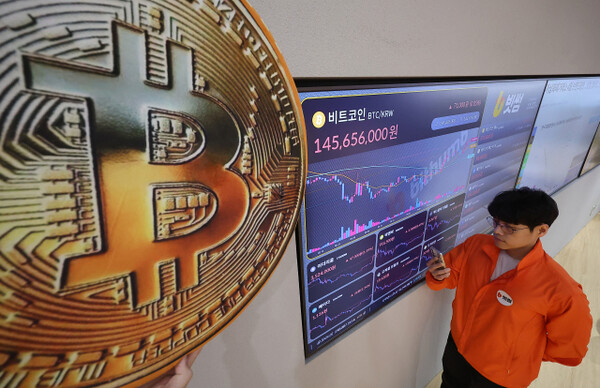
After Donald Trump was elected president, the cryptocurrency market experienced a bull market, and the domestic coin market capitalization exceeded 100 trillion won. The number of domestic coin investors approached 10 million.
According to the 'Second Half of 2024 Virtual Asset Service Provider (VASP) Survey Results' released by the Financial Intelligence Unit (FIU) under the Financial Services Commission on the 20th, the average daily trading volume of domestic virtual asset exchanges in the second half of last year was 7.3 trillion won. This is a 22% increase from the first half of the same year (6 trillion won). The won-denominated deposit also increased by 114% from 5 trillion won to 10.7 trillion won.
The number of accounts registered on virtual asset exchanges is 20.02 million. This is an increase of 400,000 (2%) compared to the first half. During the same period, the number of individual and corporate users who completed Know Your Customer (KYC) and can trade increased to 9.7 million, an increase of 1.92 million (25%). Won-denominated and coin exchanges increased by 9.67 million (25%) and 30,000 (10%), respectively. Among users who completed KYC, about 12% (1.21 million) hold assets of more than 1 million won. This is a 2 percentage point increase from the first half of last year.
The domestic virtual asset market capitalization swelled to 107.7 trillion won in the second half of last year. This is a 91% increase compared to the first half of the previous year (56.5 trillion won). By category, the top 10 global virtual assets, including △BTC △ETH △XRP △Doge △SOL △ADA, accounted for 71% of the total market capitalization.
Virtual asset exchanges also recorded good performance as the market size increased. The operating profit of domestic virtual asset exchanges was 715 billion won, a 28% increase from the first half. However, the polarization between won-denominated market exchanges and coin market exchanges was prominent. The operating profit of won-denominated market exchanges increased from 599.5 billion won to 757.2 billion won, while coin market exchanges remained in the red. Under current law, coin market exchanges must have a real-name account partnership with a commercial bank to convert to a won-denominated market exchange.
The average daily trading amount of won-denominated market exchanges was 7.3 trillion won, a 22% increase from the first half. In particular, the trading volume expanded from October last year, when Bitcoin prices surged immediately after the Trump administration took office. In contrast, coin market exchanges decreased by 81% to 160 million won during the same period.
The number of employees at virtual asset service providers is 1,862. This is an increase of about 18% during the same period. In particular, anti-money laundering (AML) personnel increased by nearly 46% to 207. The average AML staff at won-denominated market exchanges is 30. Coin market exchanges had only 5.
The custody of virtual asset wallet and custody providers decreased by 89% to 1.5 trillion won compared to the first half of last year. Most were virtual asset custody services. The operating loss of virtual asset wallet and custody providers was 3.2 billion won, reducing the loss compared to the first half (4.6 billion won loss).
The number of virtual assets listed on exchanges increased by 150 to 1,357 compared to the first half. New listings were 127, a 19% decrease from the previous half. Delistings decreased by 54% to 31. Only 287 virtual assets were listed exclusively on specific exchanges, an increase of 2.







